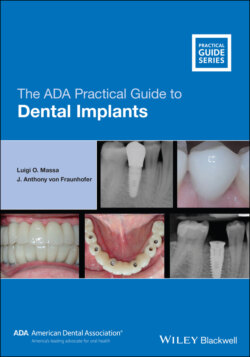Читать книгу The ADA Practical Guide to Dental Implants - J. Anthony von Fraunhofer - Страница 12
The Reality of Dental Implants
ОглавлениеAlthough there have been minor variations over the past few years, the current life expectancy for the U.S. population in 2020 is 78.93 years [10], and we can anticipate increases in tooth failures. Vertical root fractures, endodontic failures, restorative failures, and periodontal disease may result in tooth loss. In contrast to the practice of dentistry in the nineteenth and twentieth centuries, modern dentistry focuses on the replacement of lost teeth utilizing implants, combined with comprehensive analysis of function and esthetics.
In modern dentistry, the dental implant is the best tooth replacement option for nearly all situations where a tooth is missing or is failing. The primary reason for this is the extremely high success rate achieved with dental implants. Saving teeth at all costs is no longer the norm because of the unpredictability of the longevity of heroic dentistry. In other words, preserving bone and tissue regeneration are now considered to be more important than trying to prolong tooth retention. This approach not only promotes bone healing and preservation but ensures that implants are placed in a predictable and solid bony environment with a high rate of success.
The consensus regarding dental implants within the international dental community can be summarized in Table 1.1. Whereas the order of the comments may vary with the individual clinician, most would agree that these comments are valid and pertinent.
